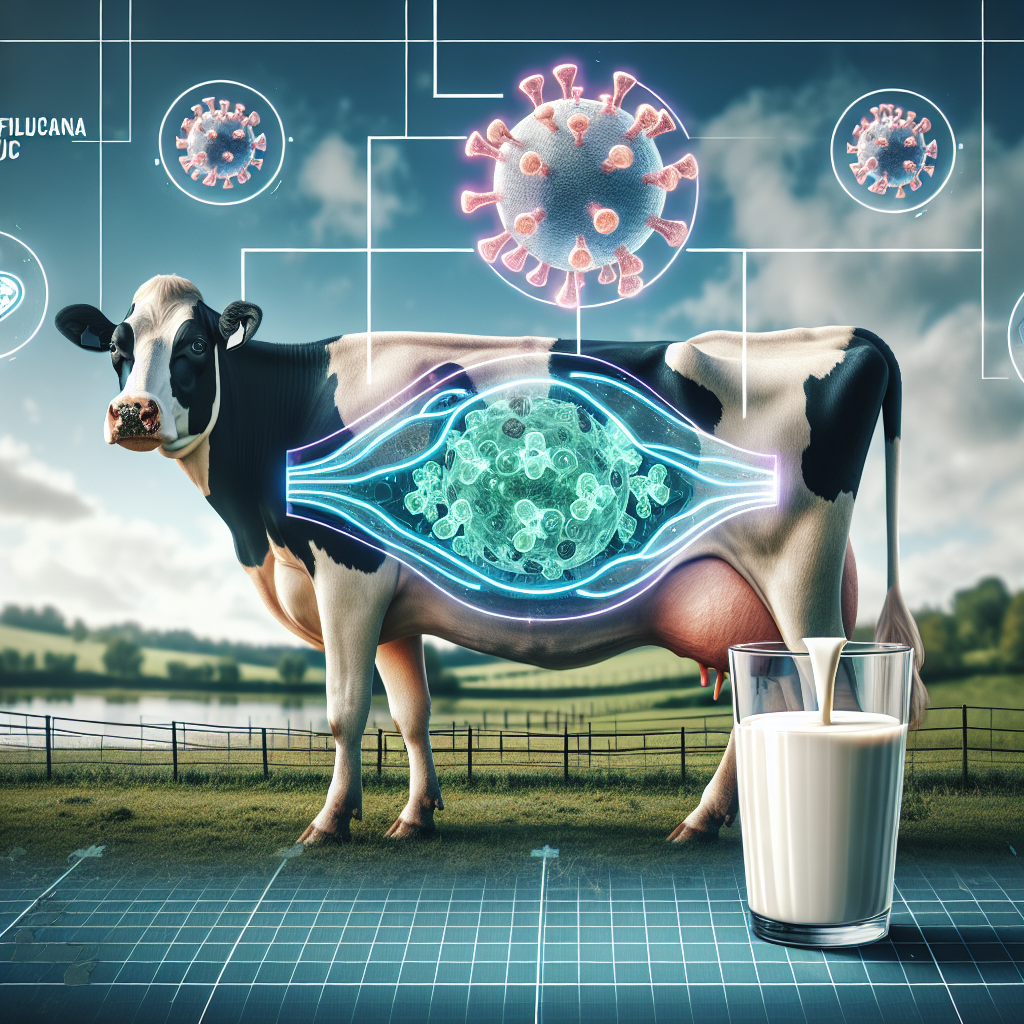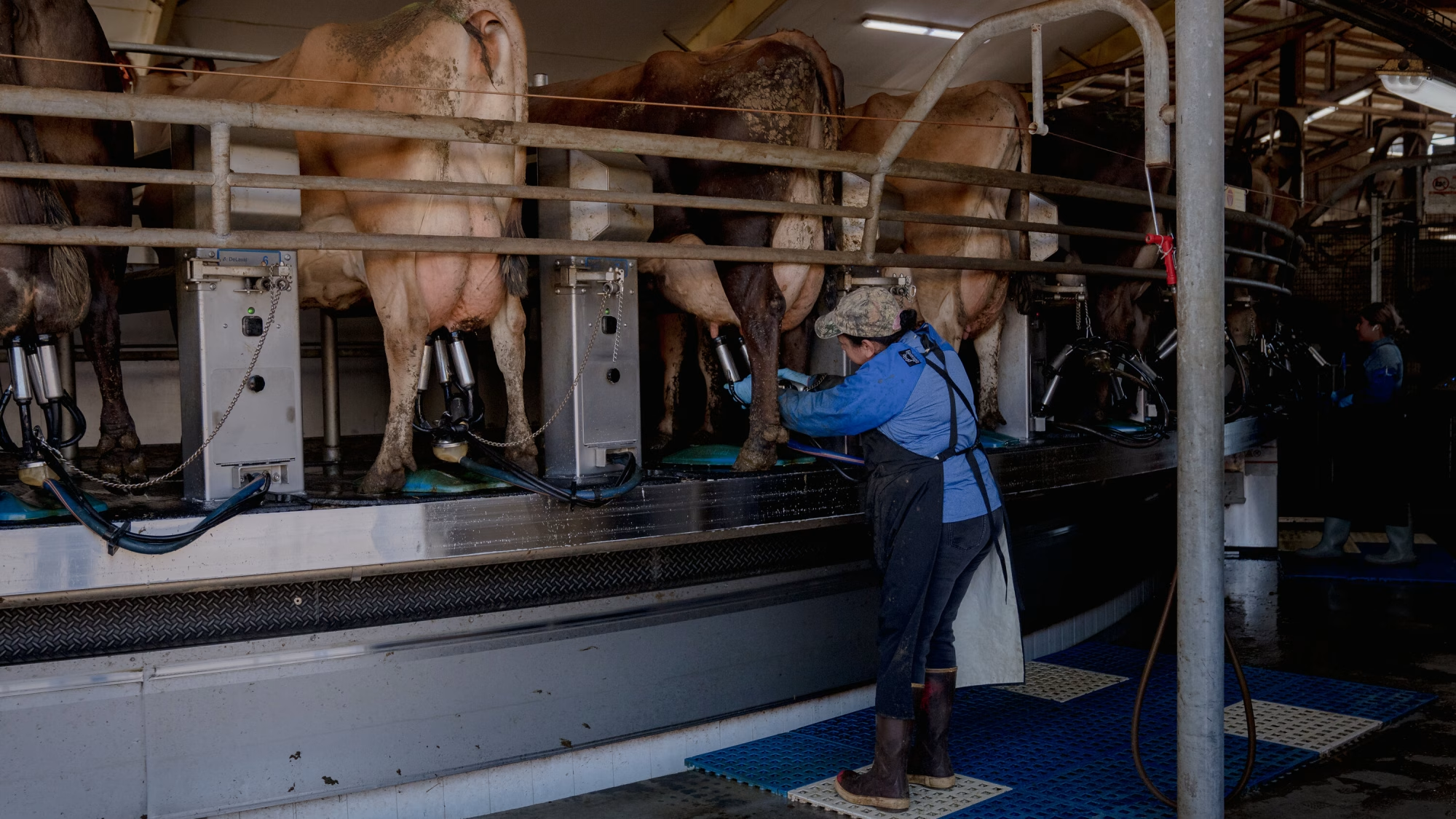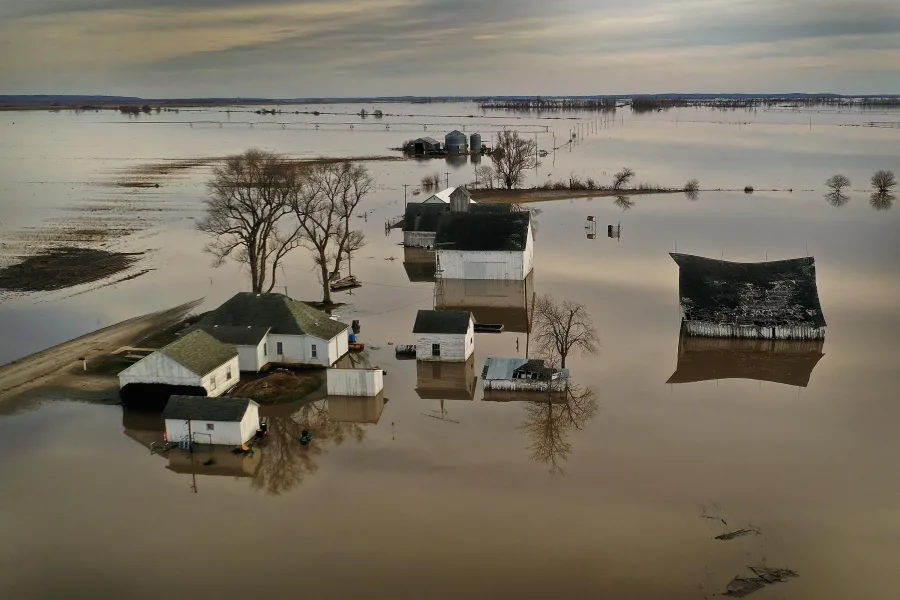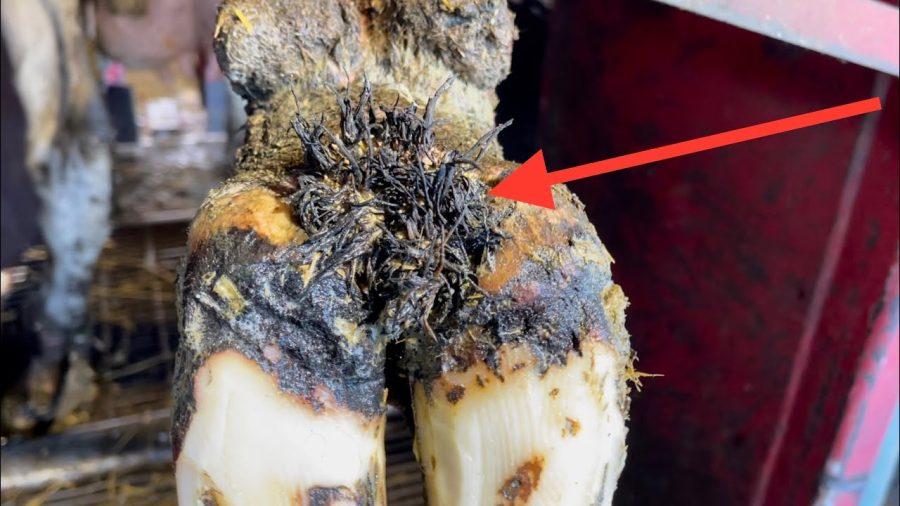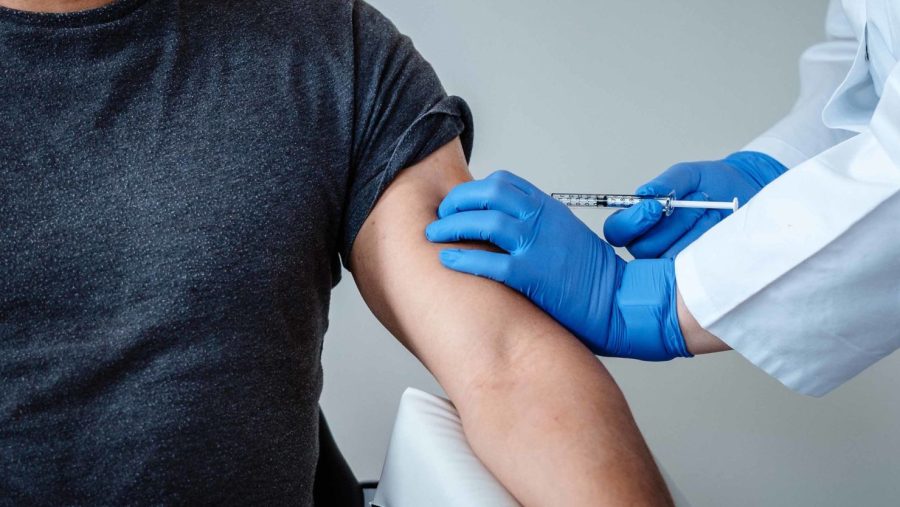Uncover the alarming spread of bird flu to mammals. Is your dairy farm at risk? Get crucial tips to safeguard your livestock and livelihood now.
Summary: Recent research reveals a worrying trend: bird flu, once an avian-only issue, is now increasingly affecting mammals. This means dairy farmers must now consider the risk it poses to their herds. Experts like Ralph Vanstreels and Martha Nelson urge stronger biosecurity, vigilant monitoring, and investment in vaccination programs. These studies, backed by significant institutions, stress the need to stay informed to guard your livestock against this threat. Bird flu’s shift into mammals, especially cases in pinnipeds, signals a dangerous cross-species risk. IntA’s crucial research shows that avian flu in mammals now has traits that boost its spread and severity. For dairy producers, this underscores the need for enhanced biosecurity and a rethink of current animal health strategies. Proactive measures like rigorous monitoring and robust vaccination programs are key to shielding your dairy cows from potential outbreaks.
- Bird flu, traditionally an avian issue, is now a threat to mammals, with increasing cases seen in dairy herds.
- Renowned experts recommend stronger biosecurity and vigilant disease monitoring on farms.
- Investing in vaccination programs is crucial for protecting livestock from potential bird flu outbreaks.
- Studies indicate bird flu in mammals has developed traits that enhance its spread and severity.
- This evolving threat calls for dairy farmers to reevaluate and enhance their current animal health strategies.
- Staying informed and proactive is essential to guard against this cross-species virus risk.

Unbelievable as it may seem, new investigations have shown that bird flu, long thought to be an avian disease, is now transmitted to mammals. This revelation is more than just a catchy title; it’s a wake-up call for dairy producers and the agricultural community. The consequences of this cross-species infection are far-reaching, presenting severe threats to cattle health and even disrupting agrarian operations. The avian flu’s spread to mammals might open the path for more complicated and dangerous viral alterations. Understanding these patterns may help dairy producers plan for and minimize future hazards.
The Shocking Truth About Bird Flu’s Leap to Mammals and What It Means for Your Dairy Farm
Bird flu, often known as avian influenza, is caused by viruses adapted to birds. The virus originated in wild aquatic animals such as ducks, geese, and swans, which act as natural reservoirs. The avian influenza virus has many subtypes, the most well-known of which are H5N1 and H7N9. These viruses can produce catastrophic outbreaks in poultry and rare human infections. These viruses usually spread among avian species by direct contact with diseased birds, polluted water supplies, or surfaces like feed and equipment.
Bird flu poses a considerable hazard to the agricultural community. An epidemic may cause significant economic losses owing to the high death rates in infected flocks and the need to kill healthy birds to prevent further spread. According to the Food and Agriculture Organization (FAO), H5N1 outbreaks resulted in the culling of over 400 million domestic birds between 2003 and 2005, generating an estimated $10 billion in economic loss. The presence of these viruses in wild bird populations poses an ongoing danger to chicken farms globally.
Breaking Boundaries: Bird Flu’s Unprecedented Dive into the Mammalian World – Why Dairy Farmers Should Be Alarmed
Recent research has shown that bird flu, which was formerly limited to avian species, is making worrying inroads into the mammalian realm. Leading specialists such as Luciana Gallo and Claudio Campagna have highlighted cases in which pinnipeds (seals) have been infected with the virus, implying a concerning cross-species transmission risk, also known as a ‘zoonotic jump ‘. Martha Nelson’s study suggests that genetic changes in the virus enable this zoonotic jump.
INTA, a leading agricultural research institute, has confirmed these suspicions through their critical work. They foundthat avian flu strains identified in mammals have changes that improve viral transmission and pathogenicity. The research is compelling: infection rates among studied animal species have grown significantly, prompting concerns in the agricultural sector.
These discoveries have substantial implications for dairy producers. Given the interrelated ecosystem of livestock and wildlife, they not only highlight the need for increased biosecurity measures on farms such as strict monitoring, immunization programs, and disinfection protocols, but also call for a reassessment of present animal health management approaches. These proactive measures may safeguard dairy cows from possible outbreaks.
Understanding these trends is critical. As Victoria Zavattieri and Valeria Olivera point out, the economic consequences of a bird flu pandemic in mammalian cattle might be disastrous, disrupting milk production and supply networks. As a result, staying up to date on these scientific findings and incorporating them into agricultural operations has the potential to distinguish resistance from susceptibility in this developing danger.
How Bird Flu Sneaks Into Your Herd: A Dairy Farmer’s Guide to Understanding and Preventing Transmission
Understanding the transmission of bird flu, or avian influenza, to mammals, including those entrenched in the dairy industry, is a multifaceted process influenced by several vectors and environmental factors. This understanding is not just informative, but empowering, as it is essential for anyone responsible for ensuring the health and productivity of livestock.
Direct Contact: One of the most straightforward transmission mechanisms is contact with infected birds or their droppings. Mammals working near avian populations—poultry or wild birds—are exposed to a higher risk of infection. The avian flu virus can thrive in bird droppings, which can then be inadvertently transferred to mammals, including cattle, through everyday farm activities.
Contaminated Feed and Water: The virus can also spread through contaminated feed or water. If bird droppings enter your dairy cattle’s feed troughs or water sources, it creates a potent transmission pathway. The virus can survive for extended periods in water, presenting a significant risk when birds and mammals share the same resources.
Environmental conditions play a crucial role in virus transmission. Seasonal changes that impact bird migration patterns can introduce new strains of the virus into different regions, inadvertently putting nearby mammalian populations at risk. This awareness can help dairy producers be more prepared for potential hazards. Additionally, the flu virus can persist in colder and wetter environments, often characteristic of dairy farms.
Indirect Pathways: Beyond direct interaction and contaminated resources, the influenza virus can spread through less obvious channels. For instance, farm workers’ farm equipment, clothing, and boots can quickly become vectors for the virus. Increased biosecurity measures can mitigate these risks, such as disinfecting equipment and changing clothes before interacting with livestock.
As a dairy farmer or someone deeply involved in the industry, recognizing these transmission mechanisms is not just informative but crucial. It can help you implement effective strategies to protect your livestock from this evolving threat, making you feel more knowledgeable and proactive in disease prevention.
The Hidden Threat Lurking in Your Dairy Farm: Why Bird Flu’s Jump to Mammals Should Terrify You!
While you might think avian influenza would be a distant concern for your dairy farm, its recent transmission to mammals should be a wake-up call for everyone in the livestock industry. If bird flu can leap from poultry to seals and other mammals, your cattle could be at risk, too. This isn’t just a theoretical scenario; it’s a pressing issue that could have far-reaching consequences for livestock health, milk production, and overall farm operations.
Livestock Health: First and foremost, the health of your herd could be compromised. Infected mammals could potentially act as vectors, spreading the virus to cattle. This could lead to respiratory issues, reduced immune function, and even fatalities in severe cases. Considering that 15 people have already been infected in the current outbreak, the risk to animals is not underestimated.
Milk Production: Any health impact on your cattle will directly affect milk production. An ailing cow is less productive, and the stress caused by illness can further decrease milk yield. Even a minor reduction in daily milk output can have significant economic ramifications over time, particularly for more extensive operations where every liter counts.
Farm Operations: Your dairy farm’s overall operations could face severe disruptions. If an outbreak occurs, quarantine measures might become necessary, affecting the infected animals and the entire farm ecosystem. This could mean restricted worker movement, additional biosecurity measures, and even culling affected livestock in extreme cases. All these measures can rack up costs and logistical challenges that no dairy farmer wants to face.
Therefore, vigilance is critical. Stay informed about the latest developments in avian influenza research and take preemptive steps to safeguard your farm. Use integrated pest management strategies to control potential carriers like wild birds and maintain rigorous hygiene practices. Your livelihood may depend on it.
Defend Your Herd: Proven Strategies to Shield Your Dairy Farm from Bird Flu’s Menacing Grip!
When it comes to safeguarding your dairy farm from the looming threat of bird flu, implementing comprehensive preventative measures is not just advisable—it’s essential. Here’s how you can bolster your defenses:
Strengthen Your Farm’s Biosecurity
Effective biosecurity protocols are your first line of defense. Ensure that all farm personnel and visitors follow strict hygiene practices, such as using disinfectant foot baths and changing clothing before entering livestock areas. Limit access to your dairy farm and maintain rigorous pest control to keep wild birds and other potential carriers away from your herd.
Invest in Vaccination Programs
While vaccines for avian influenza in mammals are still under development, staying updated on the latest advancements is crucial. Please consult your veterinarian about potential vaccine options and be prepared to implement them as soon as they become available. Vaccinating your birds may also prevent initial transmission to mammals on your farm.
Monitor Symptoms Rigorously
Early detection can differ between a contained outbreak and a full-scale disaster. Regularly monitor your birds and mammals for symptoms such as respiratory distress, decreased milk production, and unusual lethargy. Invest in diagnostic tools and train your staff to recognize the early signs of bird flu. Immediate isolation of suspected cases can prevent the spread.
Stay Informed and Proactive
Knowledge is power. Stay updated on the latest research from leading institutions like INTA and watch reports by experts like Luciana Gallo and Claudio Campagna. Participate in local agricultural networks and stay alert for any outbreaks in your area. A well-informed farmer is a prepared farmer.
By taking these preventative measures seriously, you can protect your dairy farm from the devastating impacts of bird flu. Your vigilance can make all the difference in maintaining a healthy herd and a thriving farm.
Experts Weigh In The Critical Insights Every Dairy Farmer Needs to Combat Bird Flu
Dr. Valeria Olivera, a seasoned virologist at INTA, explains, “The leap of bird flu from avian to mammalian hosts, including humans, is not just a remarkable instance of zoonotic disease progression, but also a significant concern for agricultural and dairy sectors. This virus has a high mutation rate, making it a persistent threat.”
Veterinarian Luciana Gallo stresses the importance of vigilance: “Dairy farmers must be acutely aware of the symptoms and transmission pathways of bird flu. Early detection and immediate response can mean the difference between a contained and a catastrophic outbreak.”
Ecologist Claudio Campagna contributes a broader ecological perspective, noting, “Understanding the ecological dynamics between wild birds and domestic mammals can provide crucial insights into managing outbreaks. The movement patterns of these animals play a critical role in disease spread and require constant monitoring.”
Victoria Zavattieri, another expert in veterinary medicine, adds, “Investing in robust biosecurity measures and vaccination programs is essential. These preventive steps protect individual herds and contribute to the larger goal of disease control and eradication.”
Julieta Campagna, specializing in agricultural health, emphasizes community action: “Dairy farmers should not work in isolation when dealing with potential outbreaks. Collaborating with local authorities and neighboring farms enhances the effectiveness of response strategies. It creates a resilient defense against the tide of avian influenza.“
The Bottom Line
The advent of avian flu in animals presents a significant problem that dairy producers cannot ignore. Understanding how this virus spreads from birds to animals and onto dairy farms will give you the information you need to safeguard your herd. Strengthening agricultural biosecurity, engaging in immunization programs, and closely monitoring for symptoms are all critical options. Stay aware and proactive, keep your procedures up to date, and engage with experts before implementing new preventive measures. Finally, caution and knowledge are your most excellent protection against this pernicious infection. Final Thought: How will you protect the health and safety of your herd from rising threats? Stay alert, knowledgeable, and proactive—an ounce of prevention is worth a pound of treatment.







